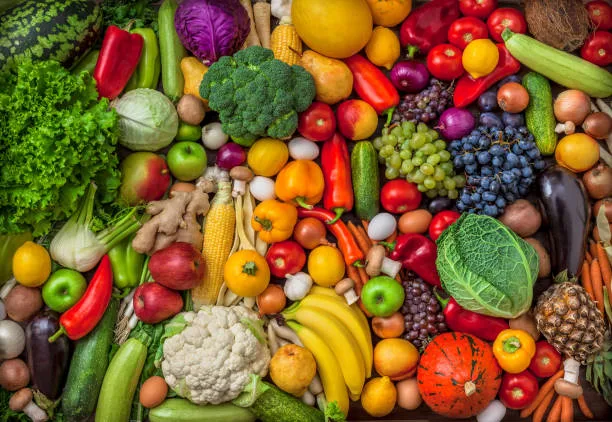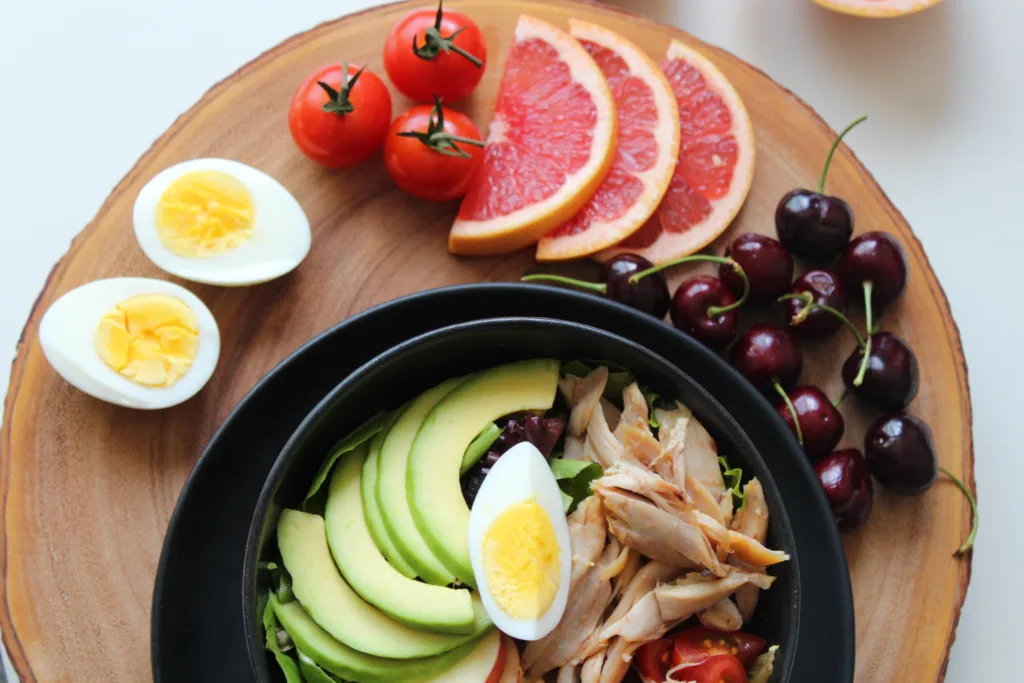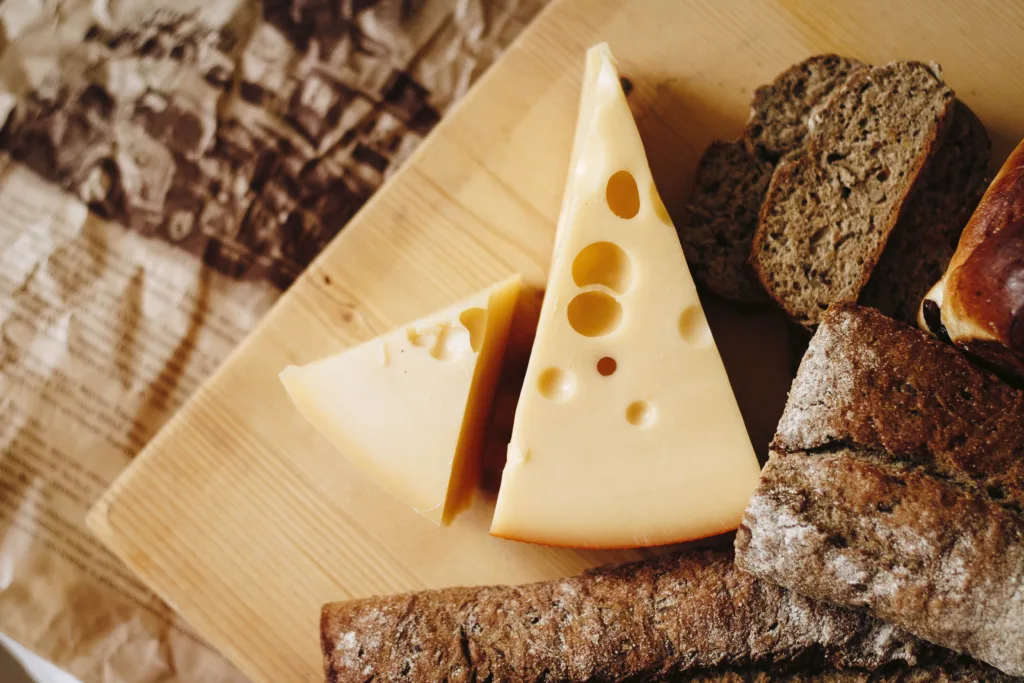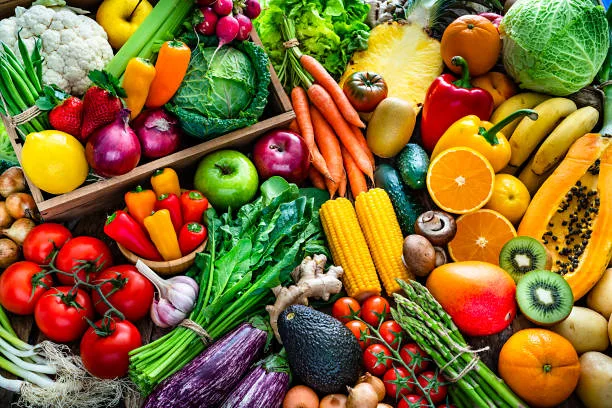Introduction
Losing weight can seem overwhelming, but this A-Z guide provides a comprehensive roadmap to weight loss success. From appetizing foods to zen practices, this guide explores a diverse range of evidence-based strategies for effective, sustainable weight management. By incorporating tools across multiple facets of wellbeing – from nutrition, to mindset, to lifestyle – you can craft a customized approach that fits your unique needs and preferences. Follow along for an A to Z journey to gain insights, inspiration, and practical steps for achieving your weight loss goals.
A. Apples and Weight Loss: Unlocking Nature’s Sweetness
Apples are nutritious, low-calorie snacks perfect for weight loss. Just one medium apple contains 4 grams of fiber to improve satiety. The antioxidants in apples may also contribute to weight loss. One study found that eating an apple before a meal resulted in consuming 15% fewer calories (1). Enjoy apples sliced with peanut butter, baked into oatmeal, or dipped in yogurt for a satisfying snack.

B. Balancing Carbohydrates for Weight Loss: Strategies and Benefits
Not all carbs are equal when it comes to weight loss. Complex carbohydrates from whole grains, fruits, and vegetables provide lasting energy. Refined carbs can spike blood sugar and trigger overeating. Aim to get at least half your daily carbs from whole food sources like quinoa, beans, apples, and broccoli for balanced nutrition. Limit added sugars and refined grains like white bread or pastries. Enjoying quality carbs in moderation supports weight goals.

C. Cooking Techniques for Healthy Weight Loss Meals
Cooking techniques help you control calories without sacrificing taste:
- Grill or broil lean proteins and vegetables to add delicious flavor.
- Steam veggies like broccoli and green beans to retain nutrients without oils or butter.
- Roast cauliflower, Brussels sprouts or sweet potatoes to caramelize natural sugars and enhance flavor.
- Sauté onions, peppers, mushrooms and more in broth instead of oil for bold taste.
With skillful cooking, you can create satisfying meals that nourish your weight loss journey.

D. Dairy Alternatives for Weight Loss: Navigating the Choices
When chosen wisely, dairy alternatives promote weight loss:
- Unsweetened nut milks like almond milk contain fewer calories than dairy.
- Kefir provides probiotics to support gut health with less fat than milk.
- Greek yogurt offers thick, creamy texture with twice the protein of traditional yogurt.
Look for unsweetened varieties fortified with nutrients like calcium and vitamin D for the healthiest dairy swaps.
E. Exercise Essentials: Incorporating Physical Activity into Your Weight Loss Journey
Regular exercise provides enormous benefits for both weight loss and overall health. A mix of cardio, strength training, and flexibility exercises helps maximize results. Aim for at least 30 minutes daily of moderate activity like brisk walking to get your heart pumping. Additionally, incorporate resistance training 2-3 times per week to build metabolism-boosting muscle mass. Support your workouts with proper hydration, rest, and nutrition. Movement keeps you energized, resilient, and empowered on your weight loss path.

F. Fiber-Rich Foods for Satiety and Weight Loss
Fiber promotes satiety or that “full” feeling to support weight loss. Studies show that increasing fiber intake from foods can decrease body weight (2). Excellent sources include fruits, vegetables, nuts, seeds, beans, lentils, and whole grains like oats or quinoa. Fiber delays digestion, helping you stay satisfied on fewer calories. Fill up fiber-rich foods for effective weight management.
G. Green Tea and Weight Loss: Unveiling Its Metabolism-Boosting Potential
Green tea contains catechins and caffeine that provide thermogenic benefits to potentially aid weight loss. One meta-analysis reported that drinking catechin-rich green tea daily was associated with decreases in body weight and waist circumference (3). Sipping on unsweetened green tea gently provides caffeine to energize your efforts while supporting fat burning. Brew green tea hot or chilled to reap the metabolism-enhancing advantages.
H. Hydration and Weight Loss: The Water Connection
Proper hydration is key for weight loss success. Drinking water before meals helps you eat less calories and solidifies feelings of fullness (4). Staying hydrated keeps metabolism functioning optimally and flushes toxins from the body. Aim for at least 64 ounces of water daily. Add visual reminders and bring a water bottle to up your intake. Remember, water is the ultimate zero-calorie beverage.
I. Intermittent Fasting: An Approach to Weight Loss
Intermittent fasting (IF) alternates periods of normal eating with extended fasts. Common approaches include fasting for 16 hours daily or 24 hours 1-2 times per week. Research indicates IF may be effective for short-term weight loss, with some studies showing 4-8% decreases in body weight over 3-24 weeks (5). If interested in trying IF, start gradually and focus on healthy foods during eating windows. Consult your doctor before attempting prolonged fasts.
J. Journaling Your Journey: Using Food Tracking for Weight Loss
Keeping a food journal helps you stay accountable and make mindful choices. Writing down everything you eat along with your hunger levels before and after meals provides valuable insights. Food tracking enables you to identify problem areas like emotional or nighttime eating and become more attuned to portions. Apps make recording simple, or use a notebook. Journaling keeps you on track with your weight loss goals.
K. Kickstarting Weight Loss with Protein-Rich Foods
Protein is profoundly important for weight management. High protein foods increase satiety, preserving lean muscle mass as you lose weight. Excellent options include eggs, Greek yogurt, fish, beans, lentils, nuts, seeds, and lean poultry or meat. Aim for a palm-sized portion at each meal. Add chia seeds to oatmeal, snack on edamame, or enjoy salmon avocado toast. Fuel your journey with protein power.
L. Mindful Eating: Cultivating Awareness for Weight Loss
Mindful eating means paying purposeful attention to the eating experience by engaging all your senses. Research shows mindful eating can promote weight loss by improving your relationship with food (6). Slow down, notice textures and flavors, turn off distractions, and assess your hunger as you eat. Mindful habits help reduce overeating and emotional eating for more satisfying portions.
M. Mediterranean Diet: A Flavorful Approach to Weight Loss
A Mediterranean-style diet emphasizes whole foods like fruits and vegetables, healthy fats, lean proteins, and whole grains – an optimal approach for weight loss. One study found that participants assigned a calorie-controlled Mediterranean diet lost more weight than those just reducing calories (7). Enjoy nutritious staples like green veggies, olive oil, fatty fish, legumes, herbs, and spices. The Mediterranean flavors make healthy eating a delight.
N. Navigating Nutritional Labels: Making Informed Choices
Reading nutrition labels is crucial for weight loss success. Focus on calories, serving sizes, added sugars, unhealthy fats, and preservatives or artificial additives. Compare similar products – the fewer ingredients and additives, the better. Seek at least 3-5 grams fiber and 5+ grams protein per serving. Use labels to select wholesome, quality foods that nourish your goals.
O. Overcoming Plateaus: Strategies for Continuous Weight Loss
Weight loss plateaus are frustrating but common. Stay persistent and flexible – change one habit at a time to get back on track. Increase water intake, cut an extra 100 calories per day, add strength training, or experiment with Intermittent Fasting. Seek support if needed and practice self-compassion. With consistent effort, plateaus give way to progress.
P. Portion Control: Mastering the Art of Mindful Eating
Consuming appropriate portions is vital for weight management. Use visual guides like a deck of cards for proteins or cupped hand for snacks. Slow down and savor each bite, assessing fullness regularly. Plate half your meal with vegetables to feel satisfied on fewer calories. Avoid eating directly from packages. With mindful attention and reasonable portions, you remain in control of your choices.
Q. Quality Sleep and Weight Loss: The Sleep Connection
Adequate sleep supports a healthy metabolism and weight goals. Skipping sleep can disrupt appetite-regulating hormones like leptin and ghrelin. One study linked getting less than 6 hours of sleep per night with increased risk of obesity (8). Make sleep a priority by establishing a calming bedtime routine and limiting screen time before bed. Rest deeply knowing your body recharges as you dream.
R. Reducing Added Sugars: Cutting Back for Weight Loss
Limiting added sugar is one of the most impactful nutrition strategies for weight loss. Just one can of soda contains nearly 10 teaspoons of sugar. Reduce sweets and opt for naturally sweet foods like fruit in moderation. Watch for hidden sugars in condiments, cereals, granola bars, and baked goods. With reduced sugar intake, you’ll notice improved energy levels and cravings.
S. Stress Management for Weight Loss: Finding Balance
Unmanaged stress can derail weight loss through elevated cortisol and emotional eating. Destress with regular exercise, spending time outdoors, listening to music, meditating, trying yoga, writing in a journal, or simple breathing exercises. Maintaining inner calm empowers you to overcome challenges with resilience. Find healthy outlets that provide mental renewal and serenity.
T. Tracking Progress: Setting Goals and Celebrating Achievements
Monitoring your progress provides vital feedback and motivation on your weight loss journey. Set specific, measurable goals and record metrics like weight, body measurements, body fat percentage, before and after photos, fitness benchmarks, and more. Review regularly and celebrate milestones – even small achievements count! Tracking progress keeps you focused and inspired.
U. Understanding Emotional Eating: Strategies for Breaking the Cycle
Emotional eating means using food to cope with stress or discomfort rather than physical hunger. Begin recognizing your triggers – are you reaching for food when bored, anxious, sad, or lonely? Then cultivate alternative coping strategies like calling a friend, practicing self-care, or doing breathwork. Keep healthy snacks on hand for true hunger. You possess inner resources beyond food for comfort.
V. Vegetarian and Vegan Diets for Weight Loss: Plant-Powered Approaches
Vegetarian and vegan diets can be adapted well for weight loss when properly balanced. Build meals around wholesome plant-based proteins like beans, lentils, tempeh, nuts, seeds, and whole grains. Include plenty of leafy greens, healthy fats from avocado or olive oil, and zero-calorie flavor from herbs and spices. With a rainbow of nutrient-dense plant foods, vegetarian styles can be both satisfying and slimming.
W. Whole Foods and Weight Loss: Embracing Nutrient-Rich Eating
Centering your diet on whole, minimally processed foods lays the foundation for success. Whole foods like fruits, vegetables, legumes, nuts, seeds, and quality proteins retain their natural fiber and nutrients to nourish your goals. Avoid heavily processed items with long ingredient lists or added sugars. Cooking at home makes it easier to control quality. Surround yourself with real, vibrant foods.
X. Xenadrine, Supplements, and Weight Loss: Separating Fact from Fiction
Despite bold marketing claims, no supplement is a magic solution for weight loss. At best, products like green tea extract or glucomannan may provide marginal benefits. However, some supplements can pose health risks. Speak to your doctor before trying any pills or powders. For lasting results, stick to a solid nutrition plan, exercise regimen, and healthy lifestyle behaviors. No shortcuts replace hard work and patience.
Y. Yoga and Mind-Body Practices for Weight Loss
Yoga cultivates mindfulness and reduces stress – both key for effective weight management. Plus, yoga provides gentle strength training, flexibility, and balance. Research suggests yoga may help prevent weight gain over time (9). Any style works, or try specialized “yoga for weight loss” programs. Practice breathing techniques to instill calm and body awareness. Yoga supports your goals inside and out.
Z. Zest for Life: Maintaining Motivation for Long-Term Success
To stay motivated for the long haul, reconnect to your “why” – your purpose for wanting to lose weight and improve your health. Reread old journal entries about your goals or make an inspiration board with quotes and photos. Share your journey to gain support. Pursue other passions and practice self-care to maintain balance and joy. With inner drive and zest, you’re unstoppable.
Conclusion
This A-Z guide illuminates the multitude of evidence-backed strategies for safe, sustainable weight loss. From incorporating produce like apples to prioritizing adequate sleep and zestful living, small changes across all areas of wellness combine to create transformative results. Continue educating yourself and experiment to discover which tools work best with your lifestyle. Pair self-compassion with consistency. With an expansive toolkit and the right mindset, you can achieve the healthy, energized body you deserve. Keep striving forward one day at a time.
Thank you for reading this post, don't forget to subscribe to our free newsletter
!
